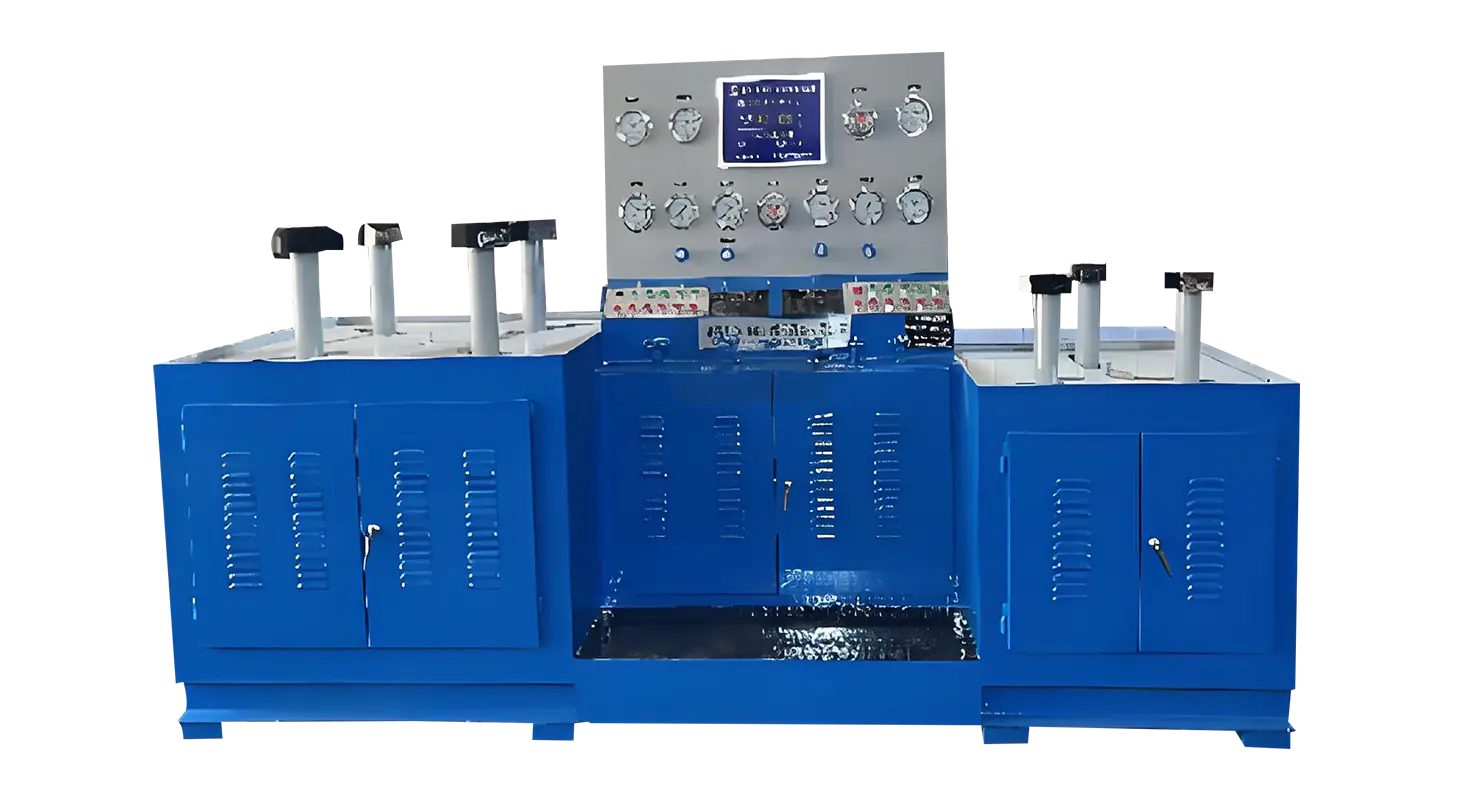Jun 25, 2025
Choosing the appropriate valve test machine is a critical step for ensuring that valves perform reliably and safely in their intended environments. Different valves require different testing methods based on their design, function, and operating conditions. Two common and important testing procedures often performed with valve test machines are the hydrostatic seat test and safety relief valve testing. Understanding these tests and how they relate to your application can help guide you in selecting the right equipment.

Understanding Hydrostatic Seat Test
The hydrostatic seat test is a method used to verify the integrity of a valve's sealing surface, commonly known as the seat. This test involves applying water or another fluid at a specified pressure to the valve to check for leaks or pressure drops that may indicate defects. It is especially important for valves that must maintain tight shutoff conditions in pipelines, tanks, or pressure vessels.
Valve test machines designed for hydrostatic seat testing typically feature pressure control systems and monitoring instruments to accurately apply and measure pressure on the valve. The test helps ensure that the valve seat can withstand the pressures it will encounter during service without leakage. Selecting a test machine with precise pressure control and reliable data acquisition capabilities will improve the accuracy and repeatability of hydrostatic seat tests.
Importance of Safety Relief Valve Testing
Safety relief valves serve a vital role in protecting systems from overpressure by releasing excess fluid or gas when pressure exceeds a set limit. Because these valves are critical for safety, their performance must be verified regularly through testing.
Safety relief valve testing involves simulating operating pressures to verify the valve’s opening and closing characteristics, response times, and set pressure accuracy. A valve test machine used for this purpose should be capable of applying controlled pressure increments while monitoring valve response. Some machines also provide the ability to test multiple valves in sequence to streamline the process.
Choosing a test machine capable of safety relief valve testing ensures that valves will activate when needed, preventing equipment damage or hazardous conditions caused by overpressure. Machines designed specifically for this task often include features for precise pressure adjustment, leak detection, and data recording.
Factors to Consider When Selecting a Valve Test Machine
When selecting a valve test machine for your specific application, consider the following factors:
Type of Valve
Valves come in many types, including ball, gate, globe, butterfly, and safety relief valves. Each type may require different testing methods. For example, butterfly valves might need seat leakage testing, while safety valves require performance testing under pressure.
Testing Requirements
Identify which tests are necessary for your valves. Hydrostatic seat tests and safety relief valve testing are common, but you may also need other tests like torque testing, functional testing, or pneumatic leak testing. Ensure the test machine supports the required testing procedures.
Pressure Range
Select a valve test machine capable of reaching and maintaining the pressure levels relevant to your valve specifications. For hydrostatic tests, the machine must handle pressures higher than the valve's up to the operating pressure. For safety relief valve testing, it should precisely simulate opening pressures.
Test Medium Compatibility
Some valve tests require water (hydrostatic), air, or other fluids. Confirm that the test machine can safely and effectively handle the test medium your valves require.
Automation and Data Logging
Modern valve test machines often feature automation for test cycles and data logging. This capability improves test accuracy, traceability, and efficiency, especially when performing repetitive tests like hydrostatic seat tests or safety relief valve tests.
Portability and Installation
Depending on your operation, you may need a portable valve test machine for field testing or a fixed test bench for a workshop. Portable units provide flexibility but may have pressure and size limitations compared to stationary machines.
Safety Features
Testing valves at high pressure requires strict safety measures. Look for machines equipped with pressure relief valves, emergency stops, and protective enclosures to safeguard operators during testing.
Application Examples
For example, a manufacturer of industrial valves used in water treatment plants may prioritize hydrostatic seat test capability to verify valve sealing under pressure. In contrast, a company specializing in gas distribution may emphasize safety relief valve testing to ensure that valves release gas properly in overpressure scenarios.
In both cases, the selected valve test machine must meet specific testing standards, maintain accuracy over repeated cycles, and provide reliable results that confirm valve performance.
Selecting the right valve test machine depends on the types of valves you work with and the specific tests needed, such as hydrostatic seat tests and safety relief valve testing. By evaluating the valve type, pressure requirements, testing procedures, and machine features, you can find equipment suited to your application that supports consistent and reliable valve performance verification.
A carefully chosen valve test machine not only helps maintain product quality and safety but also contributes to efficient testing workflows and regulatory compliance. Taking time to understand your testing needs will guide you toward a more suitable solution for your valve testing operations.